|
|
Expedition
Expedition | People
|
Log - August-14-2003
by Gerhard Behrens and Robert McCarthy
Previous | Next
The Strongest Fictitious Force “Around”
Robert McCarthy |
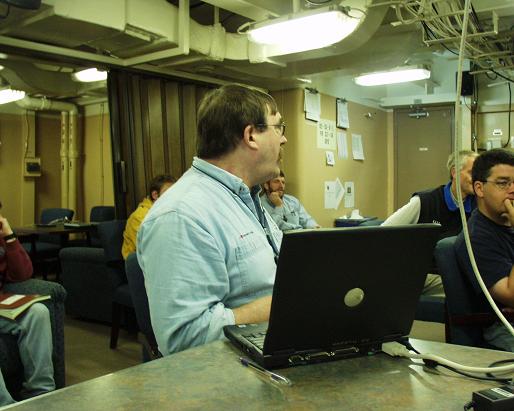 |
We are fortunate to have a meteorologist on the Healy with us. So much of the research plans depend upon sea state and ice motions, that having a meteorologist is essential. That meteorologist is Ed Hudson from the Prairie Aviation and Arctic Weather Center, Meteorological Service of Canada. Ed has proven himself to be very helpful to Gerhard and me, by giving us pictures to use, and feeding me excellent information and references that I used in some of my log entrees. Plus his wit and friendly personality has endeared him to all on board. I look forward to his daily weather predictions at our science meetings. |
| Today I want to explain a simple weather map. On any TV weather report you will probably see a map with High and Low Pressure centers with circles drawn around them. (See the weather map, courtesy of Ed Hudson.) Why circles, and how can meteorologists use them to determine which way and how strong the wind will blow? |
| First let’s talk about pressure and the atmosphere. If I have a high-pressure tank and I open the valve, the air rushes out. (The low-pressure air does not rush in and force the high pressure out.) Thus air moves from high to low pressure regions. Low-pressure systems form when surface air rises, creating a partial drop in pressure which forces surface air to rush in a fill the void. Where air aloft sinks to the earth, this is a high-pressure region, since the earth’s surface forces this air to move away in all directions. So again, why are there circles drawn around high and low pressures, and not straight lines? |
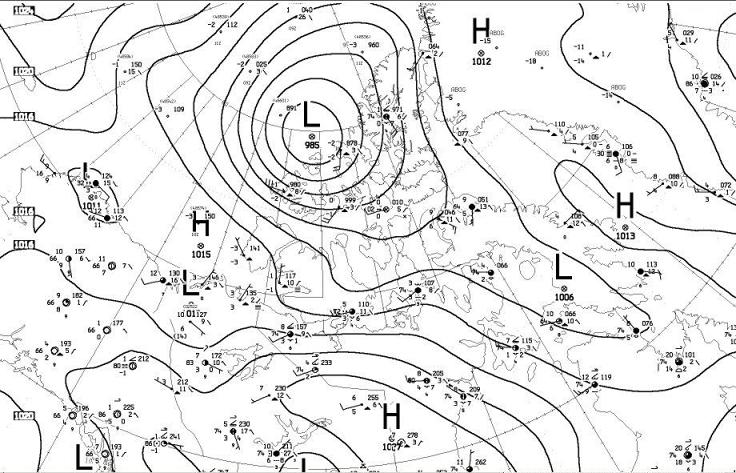 |
| Enter the French mathematician G. G. Coriolis in 1835. He demonstrated that since we are on a rotating frame of reference, we must introduce a fictitious force in the equations of motion if we want to explain motion on a fixed coordinate system. Let me try to explain with a simple example. |
| Let’s say that you are at the North Pole, and you fire an arrow directly south and aim for Pennsylvania. While the arrow is in the air, the earth continues to rotate on its axis from west to east, so that by the time the arrow lands, it hits California instead. You, having aimed carefully, explain this “miss” by stating that the arrow turned to the right in flight. (However, if you were on the moon watching the same motion, you would have seen the arrow fly straight.) Here’s where the observer on the rotating frame of reference must introduce a fictitious force to account for the arrow’s deflection to the right in the Northern Hemisphere. (The same argument holds for the Southern Hemisphere, except that the deflection is to the left.) This fictitious force is called the Coriolis force and its horizontal component is a maximum at the poles, and decreases to zero at the equator. In fact, the strength of this force is proportional to the sine of the latitude. If you try to explain motion on the earth where the latitude doesn’t change appreciably (say the weather for a part of your state), then you can assume this force is constant on that part of the earth. This is known as an f-plane approximation. Otherwise, you must assume that the Coriolis force varies within your region (Beta-plane approximation). |
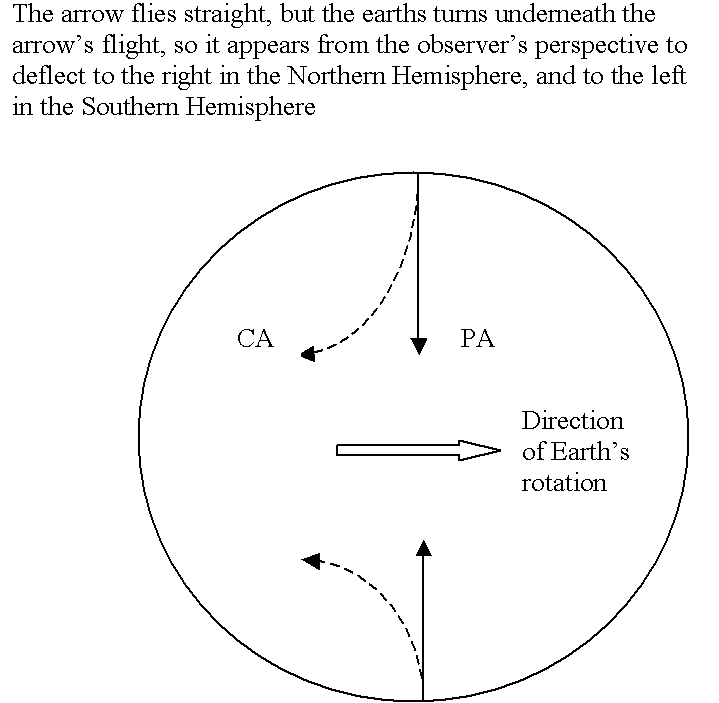 |
| Now we can understand weather maps. The air wants to rush away from the High Pressure, and flow to the Low Pressure, but the air is deflected to the right in the Northern Hemisphere. So the air rotates in a clockwise direction around a High Pressure, and similarly, the air rushing into a Low Pressure area is bent in a counterclockwise path. (The directions of rotation around High and Low Pressure areas are opposite for the Southern Hemisphere.) Thus the circles you see are the lines of constant pressure (isobars), and this is how the wind blows. There is some ground friction, which hinders the deflection slightly, which I ignored for the present argument |
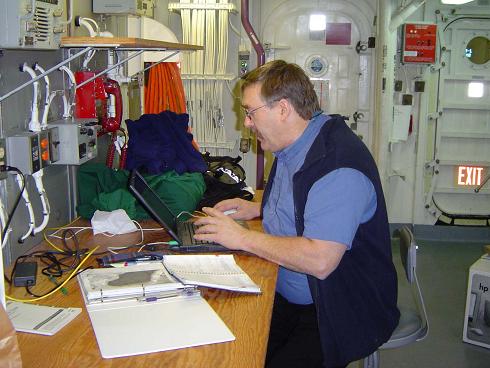 |
And finally, how can meteorologists determine wind speed? They know the strength of the High and Low Pressure centers, and thus can map out different lines of equal pressure (isobars), or contours. Just like reading a bathymetric or contour map, the closer the lines of constant pressure are to each other, the greater the gradient. A steep drop-off has many bottom contours close together, so a strong wind has many isobars spaced close together. Now you know a little about the Coriolis force, and how to interpret a weather map. |
So, you wanna be a scientist?
Gerhard Behrens |
| At my school, Adams Elementary in Corvallis, OR, every student knows about Lifeskills. It’s a list of 15 ways to act if you want to be an all-around good person. At the beginning of this trip, I wondered how these skills fit into the life of a scientist and into life on a science mission like CATS. Now that we’re at the end, the problem is keeping the description of the Lifeskills on this trip short enough for you to read. Hang in there! |
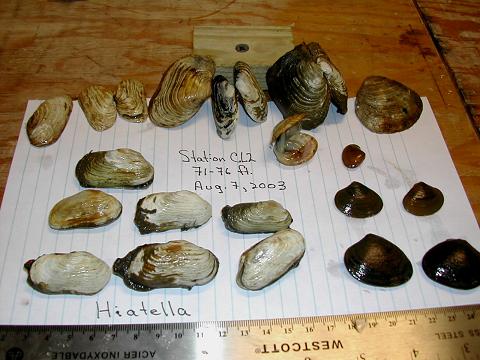
Curiosity: Can clamshell rings help us learn about water and weather patterns? |
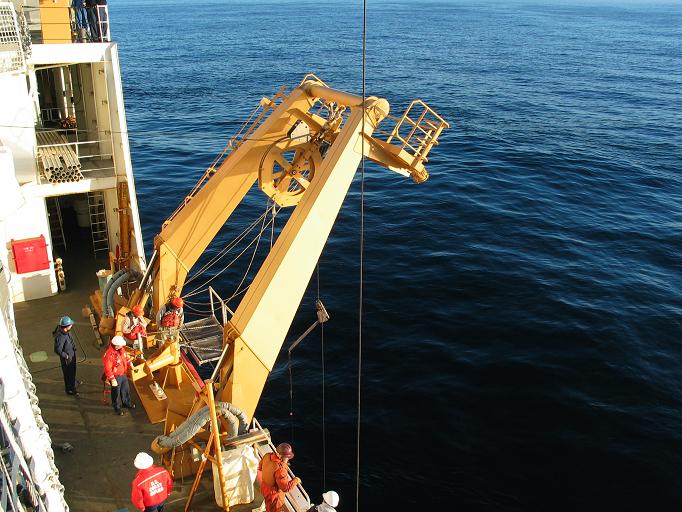
Cooperation: The Healy’s cranes, USCG Marine Science Techs, and a coring team work together. |
Curiosity means you are excited to learn new things. This might be the most important Lifeskill because it brought all the scientists here. What’s going on with the currents in Arctic waters? Could clamshell rings tell us about water and weather patterns? Right behind curiosity is Initiative, starting something on your own. Full of questions, these scientists had to do something about it. They had to write a plan, ask for permissions, and get money, proving that their questions are worth studying. |
| Cooperation means working with others as a leader or follower. Without it, this whole project is doomed. Scientists from around the United States and Canada are putting their expert minds together. The Coast Guard crew makes every sample and every test possible with this big ship, helo flights, small boats, divers, lab space, cranes, computers, bathrooms, bedrooms, and a chow line! |
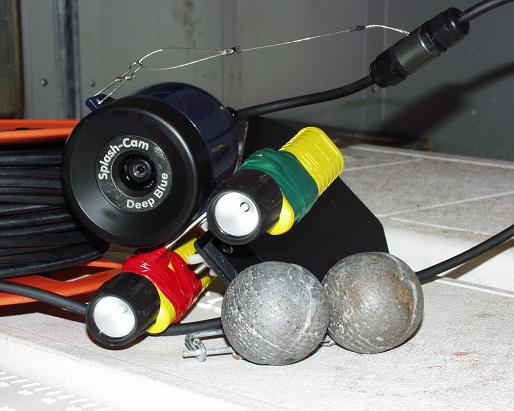
Problem Solving: How do you see underwater? Use a camera, weights, flashlights, tape, and a rudder. |
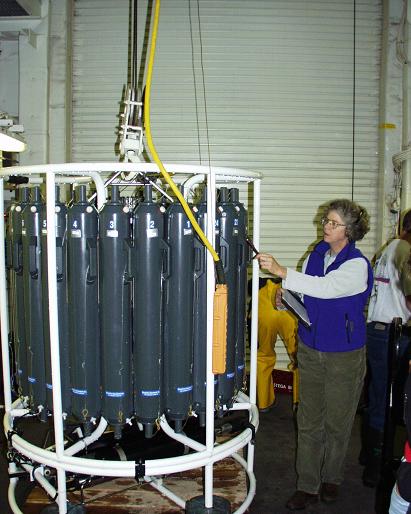
Organization and Common Sense: Chi is the sample cop, keeping hundreds of water samples straight. |
When you use all your knowledge to figure out a solution, you are Problem Solving. That happens every day around here. When mooring cables were left out of a shipment, we had to get some. When a CTD monitor stopped working, it had to be fixed. Next to problem solving skills is Common Sense, figuring out what to do without a specific rule; just using good judgment. With 13 different water tests going on, how do you keep track? Kelly and Chi came up with “the sample cop,” one person who makes sure water gets to the right person and test results come back to one place. |
| Any person or any project has to be Organized: having a plan and following through; having things in their place. Kelly Falkner, the chief scientist has to schedule each “station” where we get samples, put in a mooring, gather clams, or map the sea bottom. Tons of tools and equipment have to be brought and put in the right place. Read the packing list from August 12 if you need a reminder about the organization involved in this trip! |
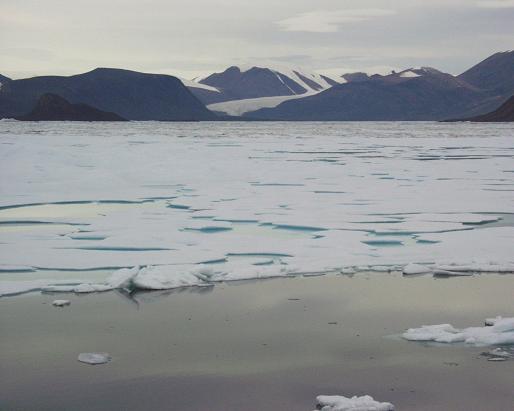
Flexibility and Patience: Too much ice; no science today. Two weeks later, it was clear. |
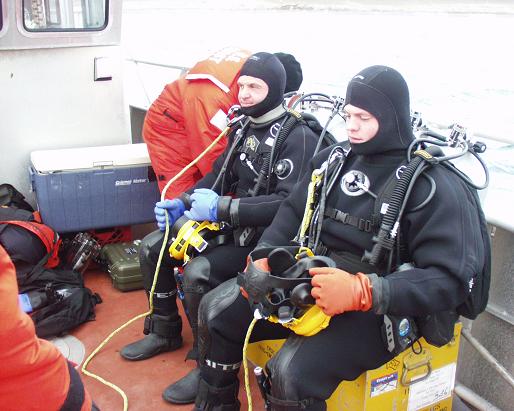
Effort: The divers head into COLD water, over and over and over. |
But, for everything that is organized and planned, a scientist has to be Flexible: able to handle change and go with the unexpected. Yesterday, 50-knot winds blew and a mooring operation had to be cancelled. Sunday, the sea bottom was too hard, and then too soft, to place a mooring. At the third choice, we found the bottom to be “just right.” Patience means you are able to wait. Two weeks ago, we came to Alexandra Fiord to place a mooring and get clams. We found too much ice. We are back, two weeks later, in a clear fiord with good weather. Robie Macdonald says, “You can’t rush research in the Arctic". |
| The next set of skills is very personal. You do these especially when no one is looking. Effort means you do your personal best. Every person on this ship is here because they proved this at their jobs. Perseverance means you keep trying, even when something is hard. The rosette crew had a few 24-hour shifts: collecting water samples all day and all night. The mooring crew had to build 26 units, one after the other, day in and day out. Responsibility means doing what you are supposed to do, and involves trust. One person can ruin the bathrooms on the whole ship by throwing something down the toilet. If a person on “watch” does not check the computers, the sea bottom mapping can be lost. Integrity means you do what’s right, and usually involves courage and truthfulness. A scientist has to report what they find, not what they wanted to find. A valuable coring operation had to be cancelled because the weather made it unsafe to work with 500 kilos (1200 pounds) of weight. |
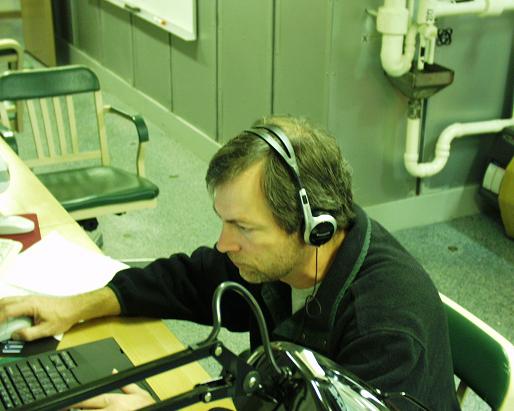
Perseverance: Roger Davis works seafloor mapping computers for long hours. |
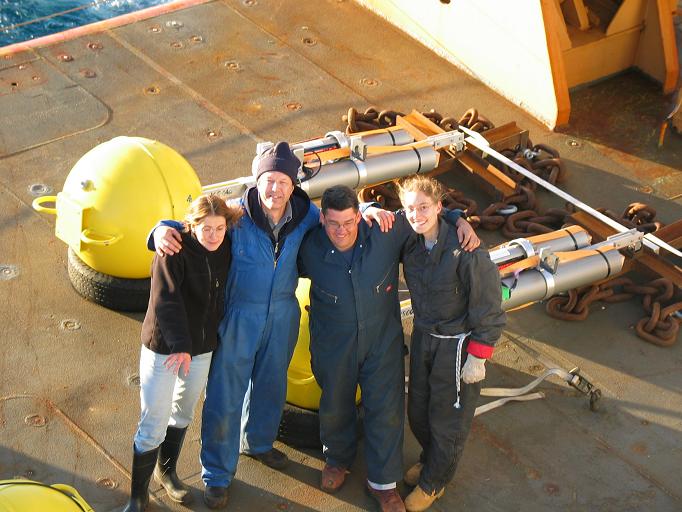
Laughing, Caring, Appreciation: The mooring team celebrates a job well done. |
Finally, there are some Lifeskills that make living joyful. We all need this. Caring is the golden rule: treat others like you want to be treated. Be a good listener and pass on compliments. The chief scientist awarded golden globes (chocolate wrapped in gold paper) to teams as their work progressed. She even cleaned a few toilets in the lab. We listened to successes and failures during team meetings. We shared stories at mealtimes. A Sense of Humor lets you have fun, without hurting others. Every day, Ed Hudson shared silly things he heard around the ship. Poems were written about the scientists. We made each other laugh during long work sessions with jokes and stories. Appreciation means you are thankful. We used “Thank You” a lot during the past month, and we meant it! |
| There you have it. It takes a lifetime to master these skills. They will help you be a good mechanic, plumber, teacher, doctor, programmer, chef, teammate, mom, dad, and, of course...scientist. |
| The Lifeskills are part of Susan Kovalik’s Integrated Thematic Instruction. |
|
